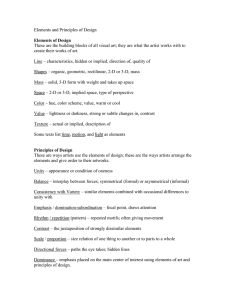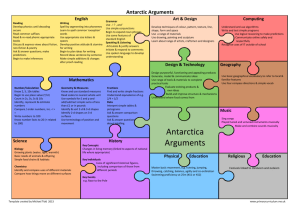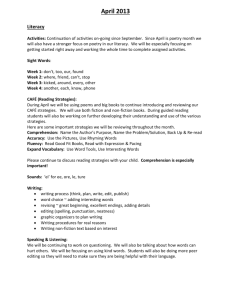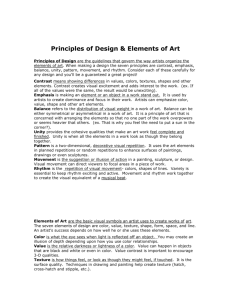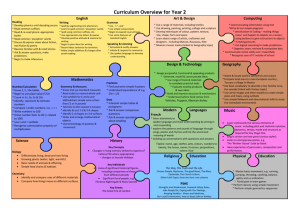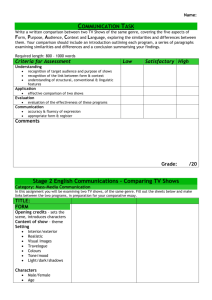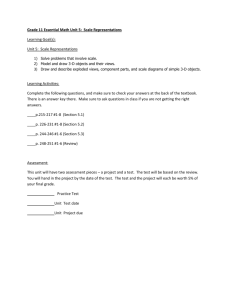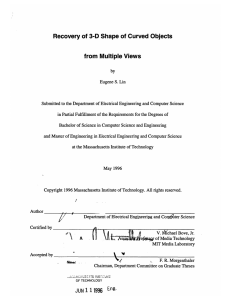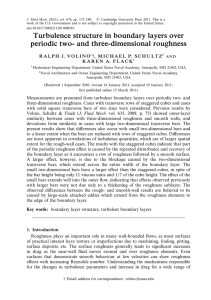Art Scope and Sequence - Northern Illinois District
advertisement
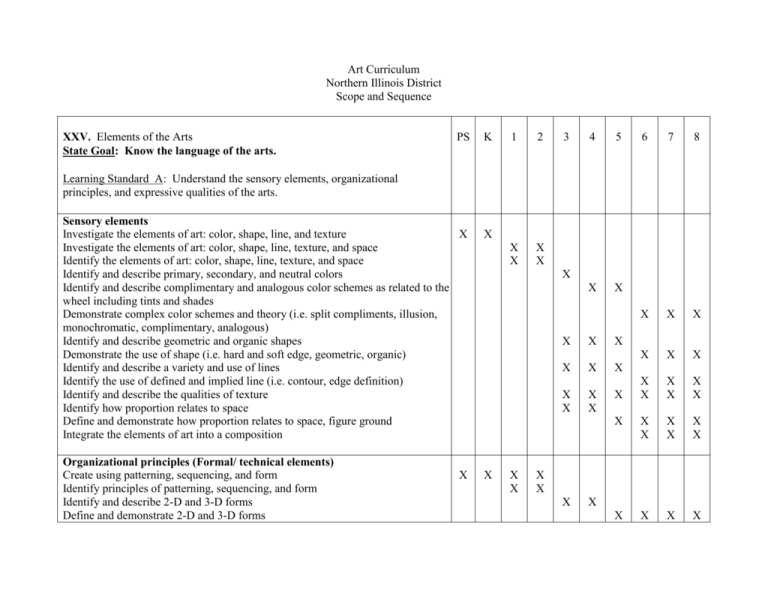
Art Curriculum Northern Illinois District Scope and Sequence XXV. Elements of the Arts State Goal: Know the language of the arts. PS K 1 2 X X X X 3 4 5 6 7 8 X X X X X X X X X X X X X X X X X X X X X X X X X Learning Standard A: Understand the sensory elements, organizational principles, and expressive qualities of the arts. Sensory elements Investigate the elements of art: color, shape, line, and texture X X Investigate the elements of art: color, shape, line, texture, and space Identify the elements of art: color, shape, line, texture, and space Identify and describe primary, secondary, and neutral colors Identify and describe complimentary and analogous color schemes as related to the color wheel including tints and shades Demonstrate complex color schemes and theory (i.e. split compliments, illusion, monochromatic, complimentary, analogous) Identify and describe geometric and organic shapes Demonstrate the use of shape (i.e. hard and soft edge, geometric, organic) Identify and describe a variety and use of lines Identify the use of defined and implied line (i.e. contour, edge definition) Identify and describe the qualities of texture Identify how proportion relates to space Define and demonstrate how proportion relates to space, figure ground Integrate the elements of art into a composition Organizational principles (Formal/ technical elements) Create using patterning, sequencing, and form Identify principles of patterning, sequencing, and form Identify and describe 2-D and 3-D forms Define and demonstrate 2-D and 3-D forms X X X X X X X X X X X X X X X X X X X X PS K 1 2 Identify and describe rhythm, pattern, and movement Define and demonstrate rhythm, pattern, and movement Identify and describe symmetrical balance Identify and describe symmetrical and asymmetrical balance Identify and describe emphasis, variety, and unity Demonstrate emphasis, variety, unity, and sequence Demonstrate the use of thematic development Integrate the principles of art into a composition 3 4 X X 5 6 7 8 X X X X X X X X X X X X X X X X X X X X X X X X X X Expressive qualities Create using mood and emotion Identify the use of mood and emotion Define and demonstrate the use of mood and emotion Identify the use of symbol and story Define and demonstrate the use of symbol and story Investigate a problem creatively and imaginatively, exploring many possible solutions Appreciate creativity as inherent in every person and as a gift of God X X X X X X X X X X X X X X Changes in elements and expressive qualities Learning Standard B: Understand the similarities, distinctions, and connections in and among the arts. Characteristics of visual art styles Similarities, contrasts, and relationships between the visual arts and the other fine arts Be exposed to/identify similarities in and among the visual arts (e.g. patterning, X X sequencing, mood) Be exposed to/aware of the connections between visual arts and drama, dance, and music X X 2 X X X X X X X PS Identify the similarities and contrasts between visual arts, drama, dance, and music Understand how elements and principles combine within an art form to express ideas Understand how elements and principles combine within two or more art forms to express thematic ideas 3 K 1 2 3 X 4 X 5 6 7 8 X X X X X X X XXVI. Performance of the Arts State Goal: Through creating and performing, understand how works of art are produced. PS K 1 2 3 4 5 6 7 8 PS K 1 2 3 4 5 6 7 8 X X X X X X X X X X X X X X X X Learning Standard A: Understand processes, traditional tools, and modern technologies used in the arts. Processes used to create visual arts Participate and practice creating visual arts X Participate and practice creating 2-D visual arts (i.e. painting, printmaking, drawing) Participate and practice creating 3-D visual arts (i.e. sculpture) Refine skills in creating 2-D and 3-D visual arts Demonstrate and describe skills used to create specific effects in 2-D visual arts (i.e. painting, printmaking, drawing, photography) Demonstrate and describe skills used to create specific effects in 3-D visual arts (i.e. sculpture, textile arts) Tools of the visual arts Be exposed to a variety of art tools X Learn to use art tools is a safe and responsible manner X Identify a variety of art tools and media Continue to use art tools and media in a safe and responsible manner Refine skills in using art tools and media in a safe and responsible manner Describe the relationships among media, art tools, technology, and processes Demonstrate and describe the relationships among media, art tools, technology, and processes Technology of the visual arts Be exposed to a variety of art technology X 4 X X X X X X X X X X X X X X X X Learn to use art technology in a careful and responsible manner Employ a variety of art technology Continue to use art technology in a careful and responsible manner Refine skills in using art technology in a careful and responsible manner PS K 1 X X X X 2 3 4 5 6 7 8 X X X X X X X X X X X X X X Learning Standard B: Apply skills and knowledge necessary to create and perform in one or more of the arts. Knowledge and skills needed to create works of visual art Be aware of the skills needed to create visual arts Observe the processes and tools through teacher demonstrations Demonstrate knowledge and skills needed to create visual arts Creation of original works of visual art Emulate the art processes to create original art X X X X X Productions of 2- and 3- dimensional works and other modern technological arts Produce visual art using manipulation, eye-hand coordination, building, and X imagination Use technology to produce art (e.g. photography, software) X 5 X X X X X X X X X X X X X X X X X X X X X X X X X X X X X X X XXVII. The History and Application of the Arts State Goal: Understand the role of the arts in civilizations, past and present. PS K 1 2 3 4 5 6 7 8 PS K 1 2 3 4 5 6 7 8 X X X X X X X X X X X X X X X X X X X Learning Standard A: Analyze how the arts function in history, society, and everyday life. Roles of artists and audiences Identify the role of artists and their contributions Experience a variety of master artists’ works that represent different cultures Identify the distinctive role of artists and audiences and how artists contribute to communication, celebrations, occupations, and recreation Influence of the visual arts on societies, civilizations, cultures, and the church Recognize that art reflects societies and civilizations, past and present Use visual arts to express universal and specific Christian themes Communicate and remember God’s Word effectively through the visual arts Identify art as it relates to church festivals and worship settings Recognize the emotions and the theme expressed in a given visual image X X X X X X X X X X X X X X X X X X X X X X X X X X X X X X X X X X X X X X X X X X X X X X X X X X X X X X X X X X Learning Standard B: Understand how the arts shape and reflect history, society, and everyday life. Changes in visual art forms through the ages and their classification by artistic periods Know how images convey stories about people, places, and times Compare similarities and differences in visual art forms through the ages Significant works of visual art and their relationships to historical periods and cultures 6 Experience visual arts from different periods and cultures 7 PS K 1 2 3 4 5 6 7 8 X X X X X X X X X X
